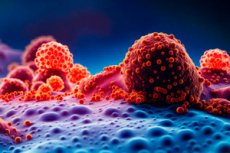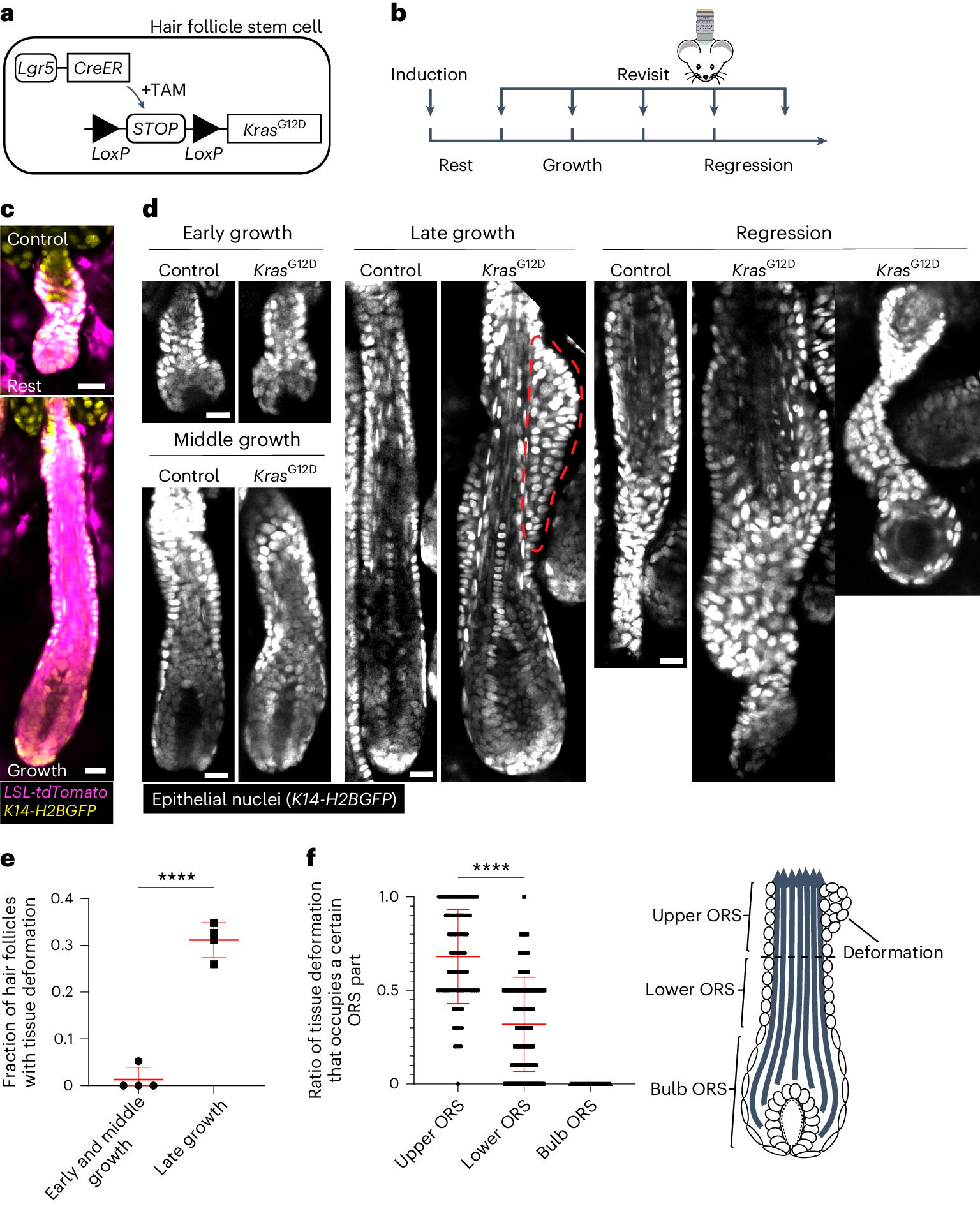Scientists track the earliest physical changes in cells that cause cancer
最近審查:14.06.2024

When cancer is diagnosed, there are already many events behind it at the cellular and molecular levels that happened unnoticed. Although cancer is classified into early and late stages for clinical purposes, even an "early" stage tumor is the result of many previous changes in the body that were undetectable.
Now, scientists at Yale University School of Medicine (YSM) and their colleagues have gained a detailed understanding of some of these early changes, using powerful high-resolution microscopy to track the very first physical changes that cause cancer in mouse skin cells.
By studying mice that carry a mutation that promotes the development of cancer in their hair follicles, scientists discovered that the first signs of cancer formation occur at a specific time and place in the growth of the mice's hair follicles. What's more, they found that these precancerous changes can be blocked with drugs known as MEK inhibitors.
The team was led by Tianchi Xin, Ph.D., a postdoctoral fellow in the YSM Department of Genetics, and included Valentina Greco, Ph.D., a YSM Professor of Genetics and a member of the Yale Cancer Center and the Yale Stem Cell Center, and Sergi Regot, Ph.D., an assistant professor of molecular biology and genetics at Johns Hopkins School of Medicine.
The results of their research were published in the journal Nature Cell Biology.
Scientists studied mice developing cutaneous squamous cell carcinoma, the second most common type of skin cancer in humans. These mice were genetically engineered to have a cancer-promoting mutation in the KRAS gene, which is one of the most commonly mutated oncogenes in human cancers. KRAS mutations have also been found in lung, pancreatic, and colorectal cancers.
Early changes the scientists studied included the growth of a tiny, abnormal bump in the hair follicle, which is classified as a precancerous abnormality. "Understanding these early events can help us develop approaches to prevent cancer from eventually forming," said Xin, first author of the study.
Although their study focused on skin cancer, the researchers believe the principles they discovered could be applied to many other cancers caused by KRAS mutations because the key genes and proteins involved are the same across different tumors.
More than just cell proliferation In both humans and mice, hair follicles are constantly growing, shedding old hair and forming new ones. Stem cells, which have the ability to develop into different types of cells, play a large role in this renewal process. Previous studies have shown that KRAS mutations lead to increased stem cell proliferation in hair follicles, and this significant increase in stem cell numbers was thought to be responsible for the precancerous tissue lesion.

KrasG12D causes spatiotemporal specific tissue deformations during hair follicle regeneration.
a. Schematic of the genetic approach to induce KrasG12D in hair follicle stem cells using the tamoxifen-inducible Cre–LoxP (TAM) system.
b. Diagram showing the timing of KrasG12D induction and re-imaging in relation to the stages of the hair growth cycle.
c. Representative images of wild type resting and growing hair follicles containing the Cre tdTomato (Magenta) inducible reporter after induction.
d. Representative images of control and KrasG12D hair follicles at different stages of the hair growth cycle. Tissue deformation in the form of tubercles in the outer root sheath (ORS) is indicated by the red dotted line.
e. Proportion of KrasG12D hair follicles with tissue deformation at different stages of hair follicle growth.
f. Proportion of tissue deformations occupying the superior, inferior, and bulbous portions of the ORS for individual KrasG12D hair follicles.
Source: Nature Cell Biology (2024). DOI: 10.1038/s41556-024-01413-y
To test this hypothesis, the team used a specially designed form of mutated KRAS that they could activate at specific times in the skin cells of animal hair follicles. Xin and his colleagues used a microscopy technique known as intravital imaging, which allows high-resolution images of cells in a living body and tags and tracks individual stem cells in animals.
When the KRAS mutation was activated, all the stem cells began to proliferate faster, but the precancerous bump only formed at one specific location in the hair follicle and at one stage of growth, meaning that the overall increase in cell number likely wasn't the whole story.
Activation of the KRAS mutation in hair follicles resulted in stem cells proliferating more rapidly, changing their migratory patterns, and dividing in different directions compared to cells without the cancer-promoting mutation.
The mutation affects a protein known as ERK. Xin was able to observe ERK activity in real time in individual stem cells in living animals and discovered a specific change in the activity of this protein caused by the KRAS mutation. Researchers were also able to stop the formation of a precancerous bump using a MEK inhibitor, which blocks ERK activity.
The drug stopped the effects of the mutation on cell migration and orientation, but not on overall stem cell proliferation, meaning that the formation of the precancerous condition is due to these first two changes and not increased cell proliferation.
Precancerous changes in context Tracking the effects of an oncogenic mutation in real time in a living organism is the only way researchers have been able to discover these principles. This is important because cancer does not form in a vacuum - it is highly dependent on its microenvironment to grow and maintain itself. Scientists also needed to track not only the behavior of individual cells, but also the molecules within those cells.
"The approach we've taken to understanding these oncogenic events is really about connecting across scales," Greco said. "The framework and approaches that Dr. Xin used in collaboration with Dr. Regot allowed us to move down to the molecular elements, linking them to the cellular and tissue scale, which gives us a resolution to these events that is so difficult to achieve outside the living organism."
The researchers now want to track the process over a longer period of time to see what happens after the initial bump forms. They also want to study other oncogenic events, such as inflammation, to see if the principles they discovered apply in other contexts.

